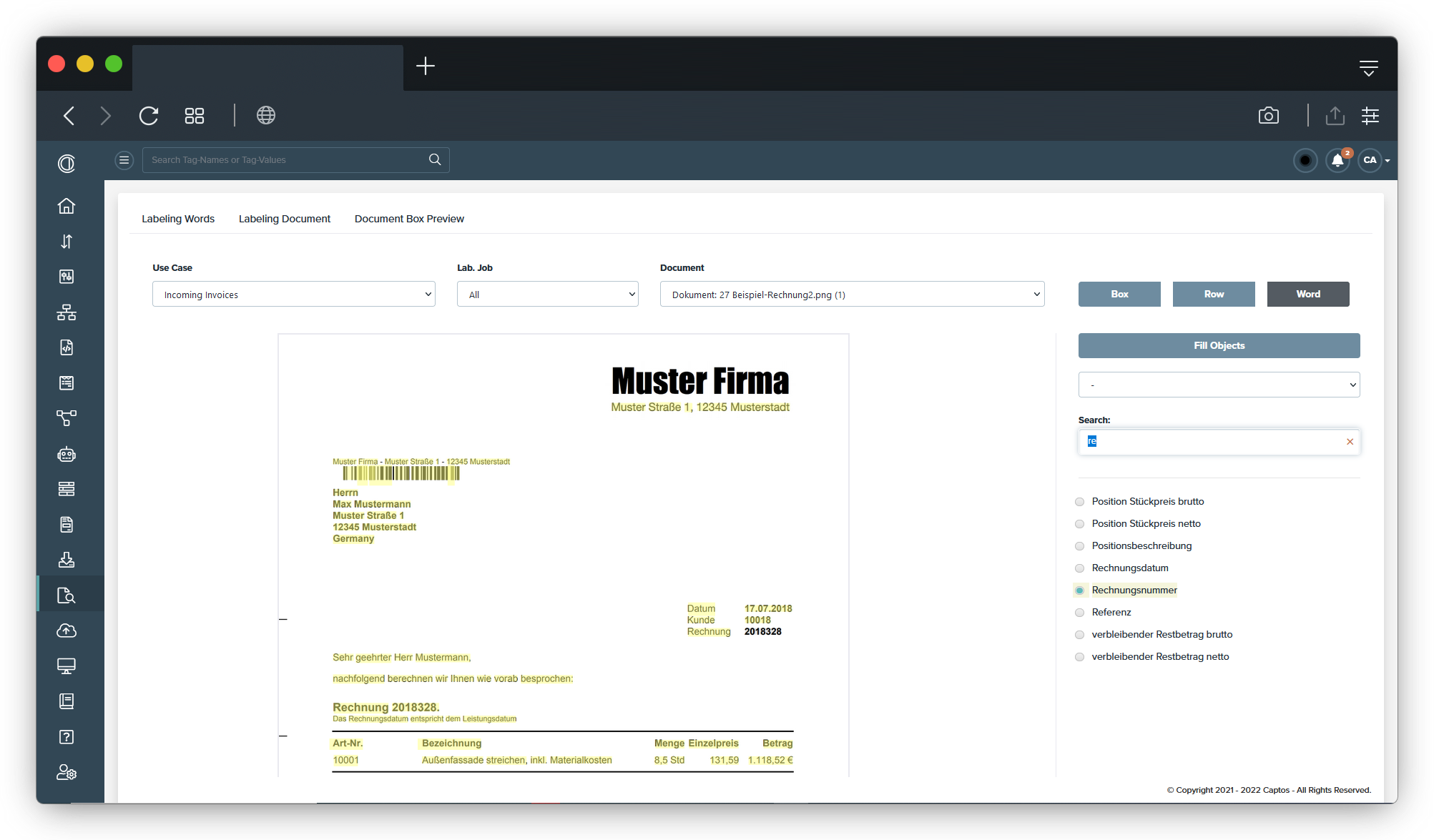-
CAPTOS offers a set of predefined, industry-specific use cases, whose underlying AI models have been pre-trained using vast amounts of data. CAPTOS users can immediately start extracting data from their own documents with the built-in use cases and achieve highly accurate extraction results.
Both built-in and user-definable use cases can be fine-tuned through a variety of configuration options. Every CAPTOS usage licence includes invoices, specific pre-supplier invoices for energy suppliers, meter reading captures and tax document processing.
Advanced automation
Many business tasks and processes today require intelligent execution that is not rule-based. CAPTOS goes beyond classic rule-based automation, offering advanced capabilities to automate complex processes by leveraging various technologies, such as RPA, machine learning, LLMs and agentic AI.
Leverage powerful integrated capabilities across the automation life cycle
Built-in use cases
Freely definable use cases
Workflow studio
Human-in-the-loop
Data correlation and Data
enrichment
RPA/APA Engine and Plan Designer
Connector Board
Labeling Engine
Built-in Use cases
CAPTOS offers a range of predefined, industry-specific use cases
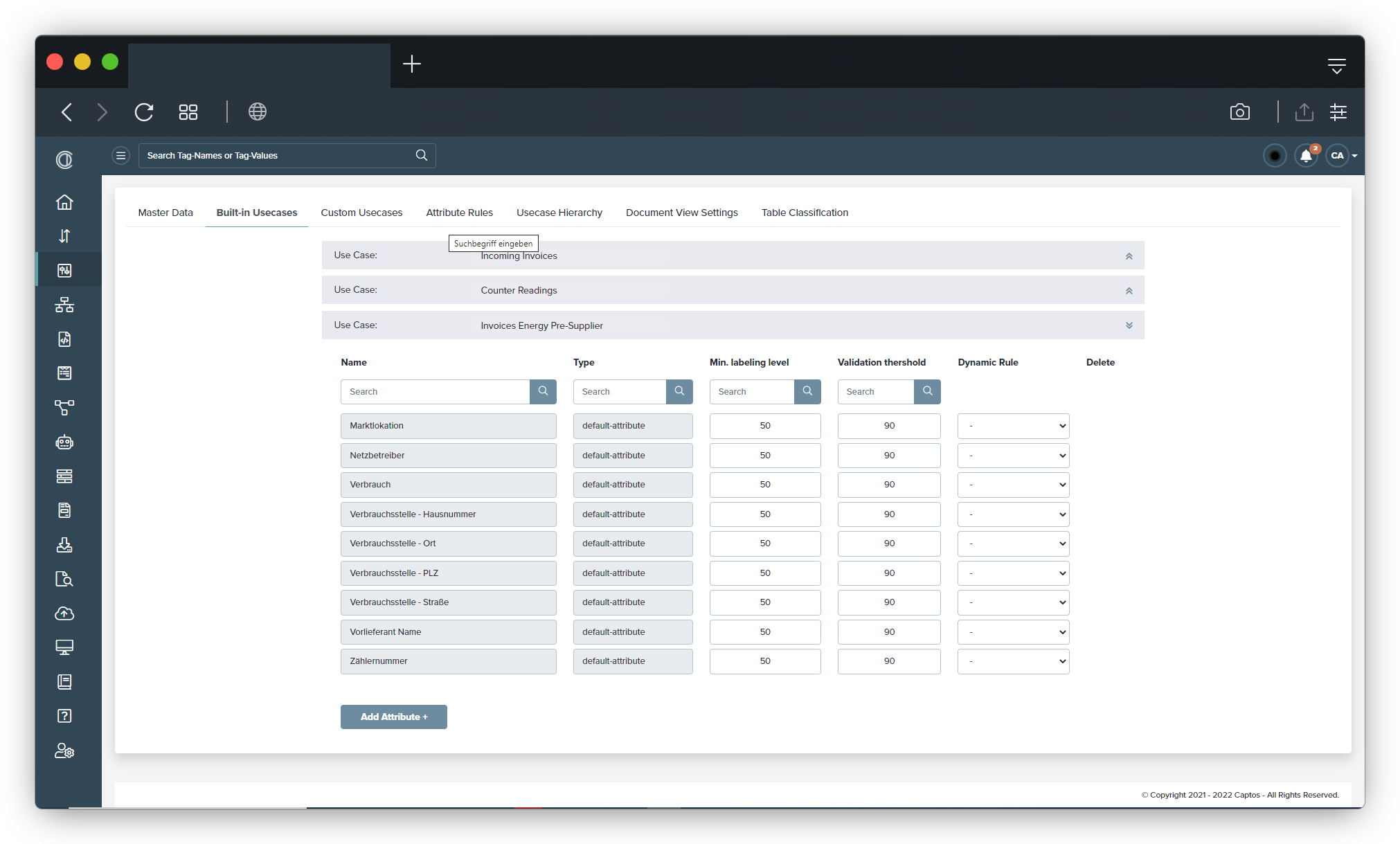
Freely definable use cases
Freely definable use cases allow CAPTOS customers
to create, configure and fine-tune their own use cases
- CAPTOS automatically creates the underlying AI models without programming. Additional CAPTOS tools assist in the automated training of these models, minimising the effort and time required for labelling and achieving high accuracy in extraction.
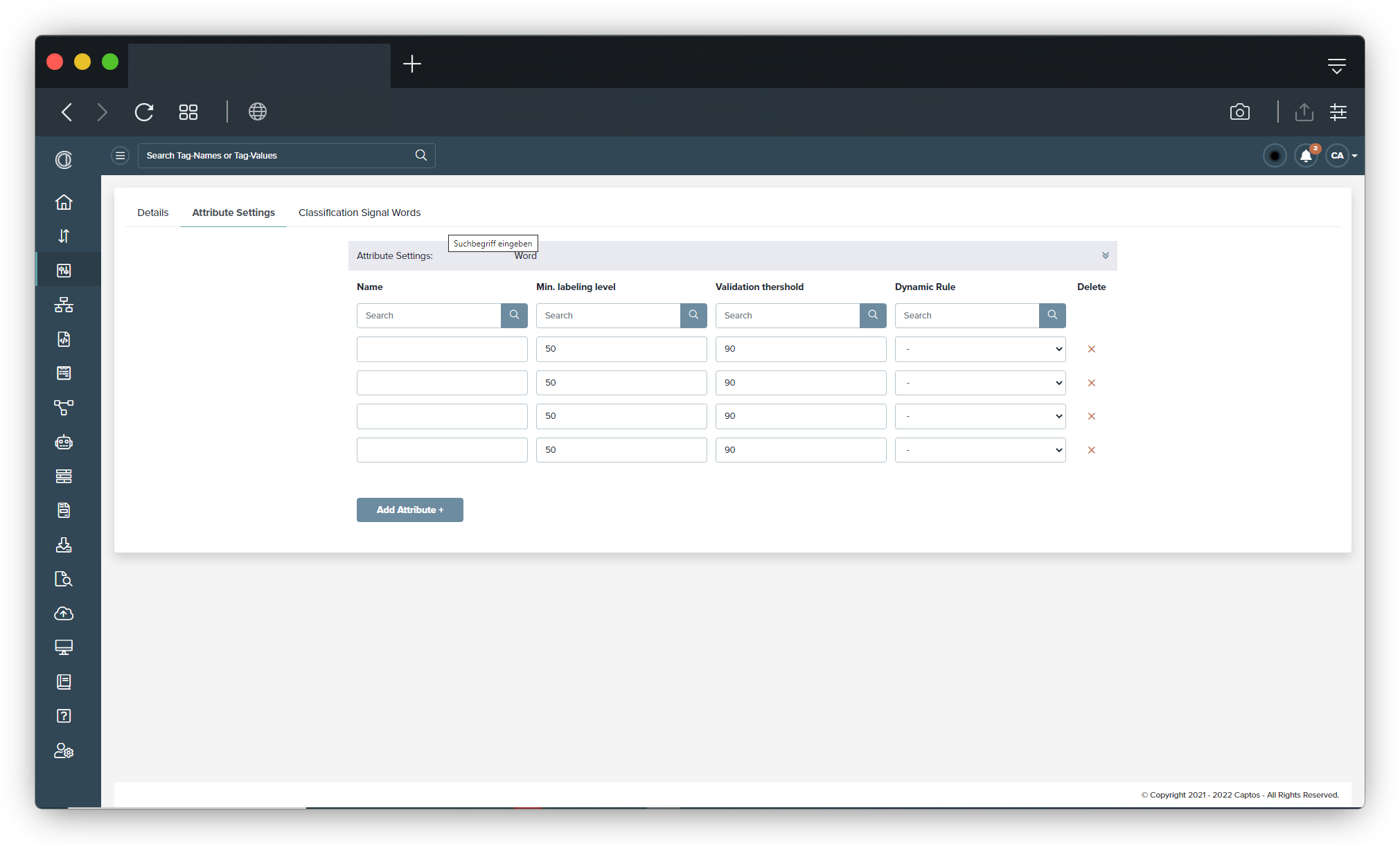
Workflow Studio
CAPTOS Workflow Studio is a visual low-code
workflow designer
-
The CAPTOS Workflow Designer comes with predefined steps that allow CAPTOS users to create their own workflows by orchestrating steps via drag-and-drop. Workflow Studio enables the differentiated processing of documents and human interactions for a defined set of documents
For example, import, validation, approval or notification steps can be combined with other steps as often as required. A set A set of process-typical steps, such as creating conditions or iterations, can be added to the existing set of process steps.
Workflows form the interface between the intelligent processing of documents and rule-based automation by software robots, extending the automation path and mapping complex processes by combining RPA/APA and AI-based IDP technology.

Human-in-the-loop
Humans and machines, hand in hand
- The human-in-the-loop approach aims to improve accuracy while maintaining human-level standards of work. Based on the configuration of levels of confidence for each use case and prediction class, CAPTOS-AI allows humans to intervene via work items and provide direct feedback on predictions below a certain level of confidence. This creates a continuous feedback loop. With this feedback, CAPTOS algorithms learn and produce better results every time. This improves the accuracy of rare data records and ensures safety and precision in critical processes.
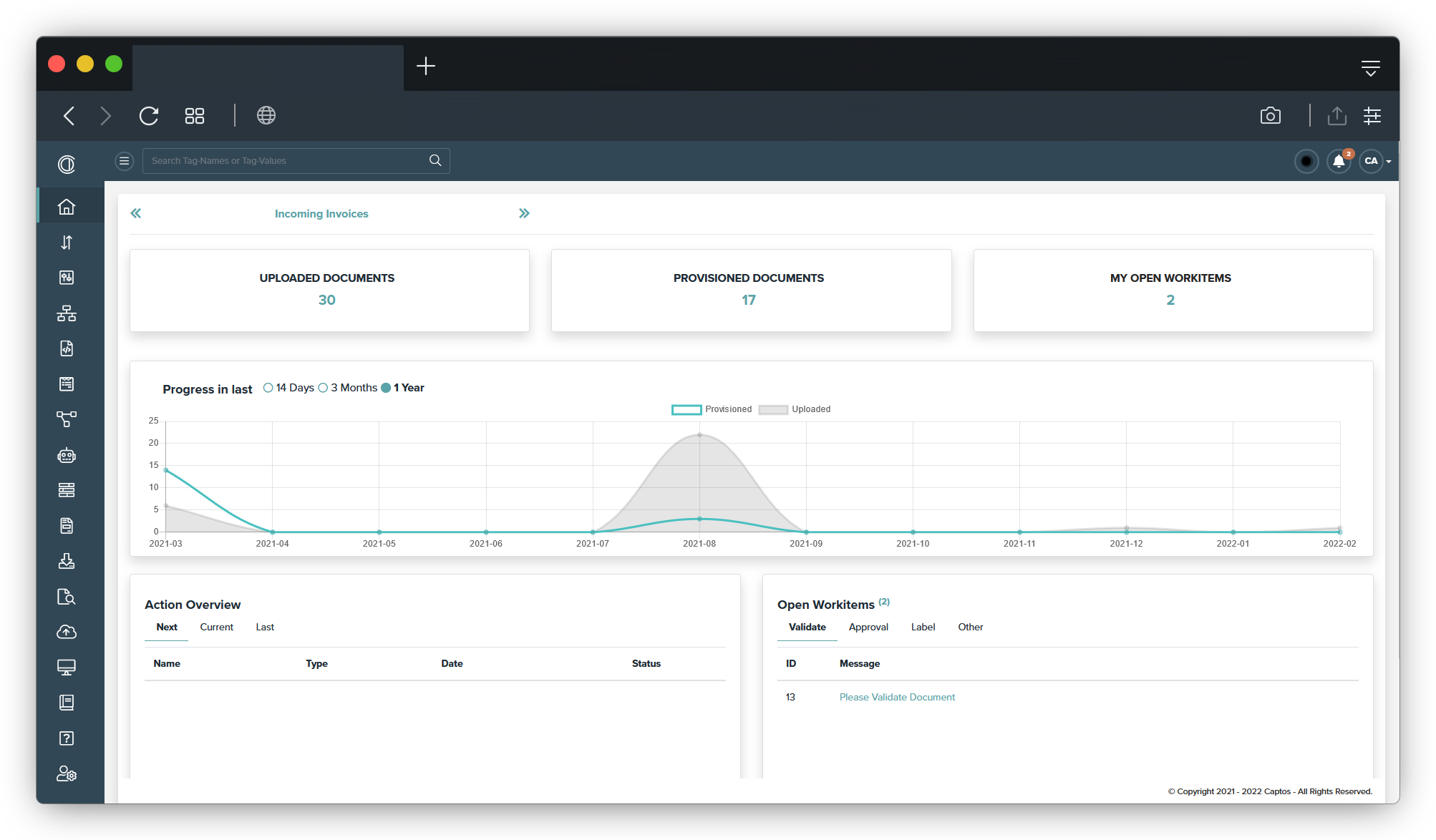
Data correlation
Correlation offers an alternative approach to refining the document processing process in CAPTOS
- Data correlation and enrichment enable predicted data from a document to be matched with a set of data from an external source, such as an ERP or procurement system, according to configured correlation rules. This improves the accuracy of the extracted data by automatically adjusting or enriching the predicted data with additional data from external sources. A typical example is matching the extracted data from documents with the data from an ordering system.
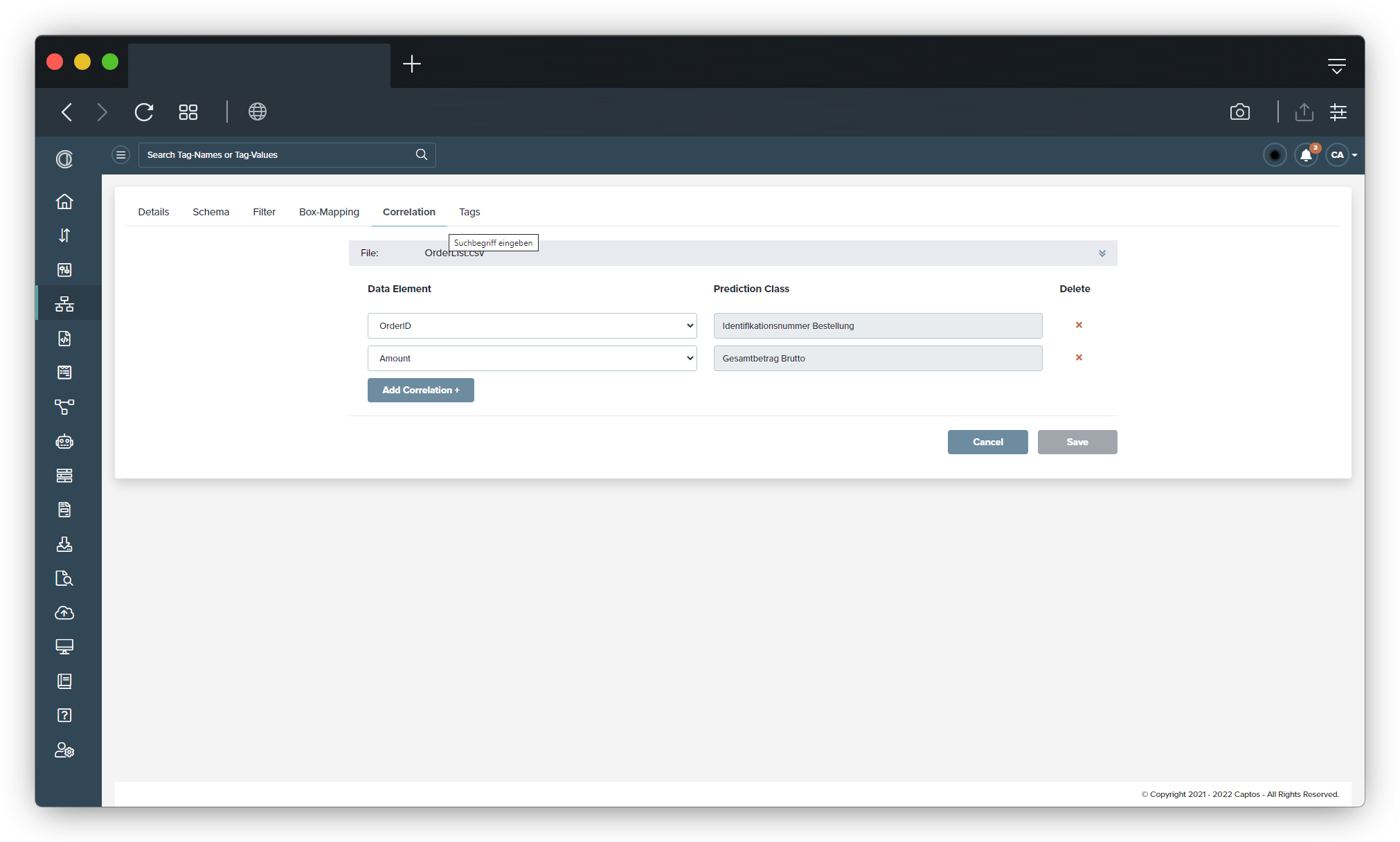
RPA/APA Engine & Bot Designer
Complete processes can be easily and quickly
automated
- With over 1.400 predefined activities, the Bot Designer can be used to create a bot plan to automate simple process steps, complex workflows, data analysis and report generation. The low-code principle is a core feature of the CAPTOS Bot Designer, which makes automation accessible to everyone, regardless of their programming experience.
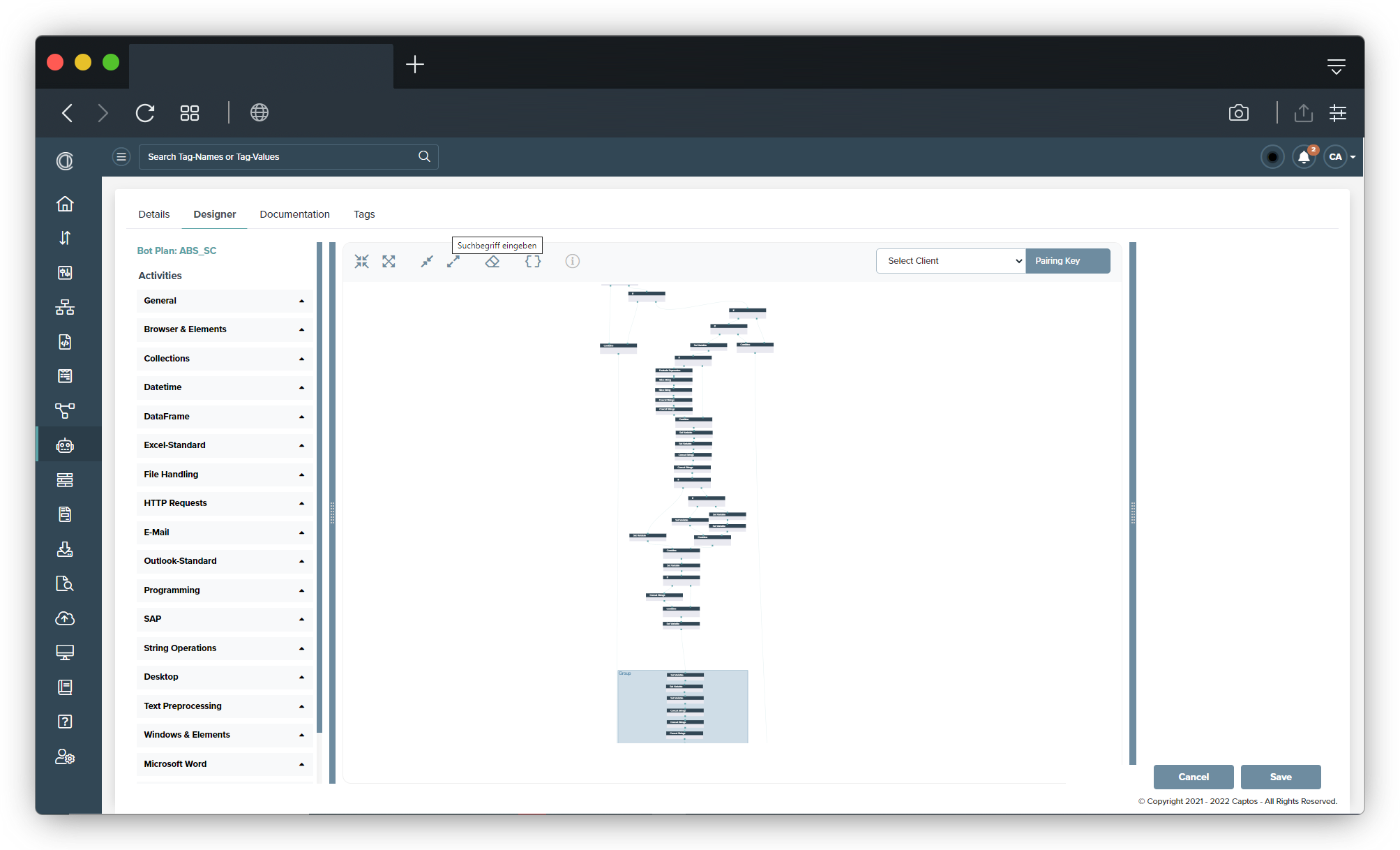
Connector Board
Captos offers a wide range of predefined connectors for seamless integration with external systems
- As a hyperautomation platform, CAPTOS was developed according to the all-in-one principle to combine several automation technologies and disciplines in one place. Predefined and freely definable connectors play an important role in seamlessly linking CAPTOS with external systems. These connectors can be used as input to import data for enrichment or correlation, as well as documents, into CAPTOS, and as output to provision the extracted data to the target system and make it available for processing in subsequent steps. CAPTOS comes with connectors such as SFTP, SAP and AWS-S3 as standard.
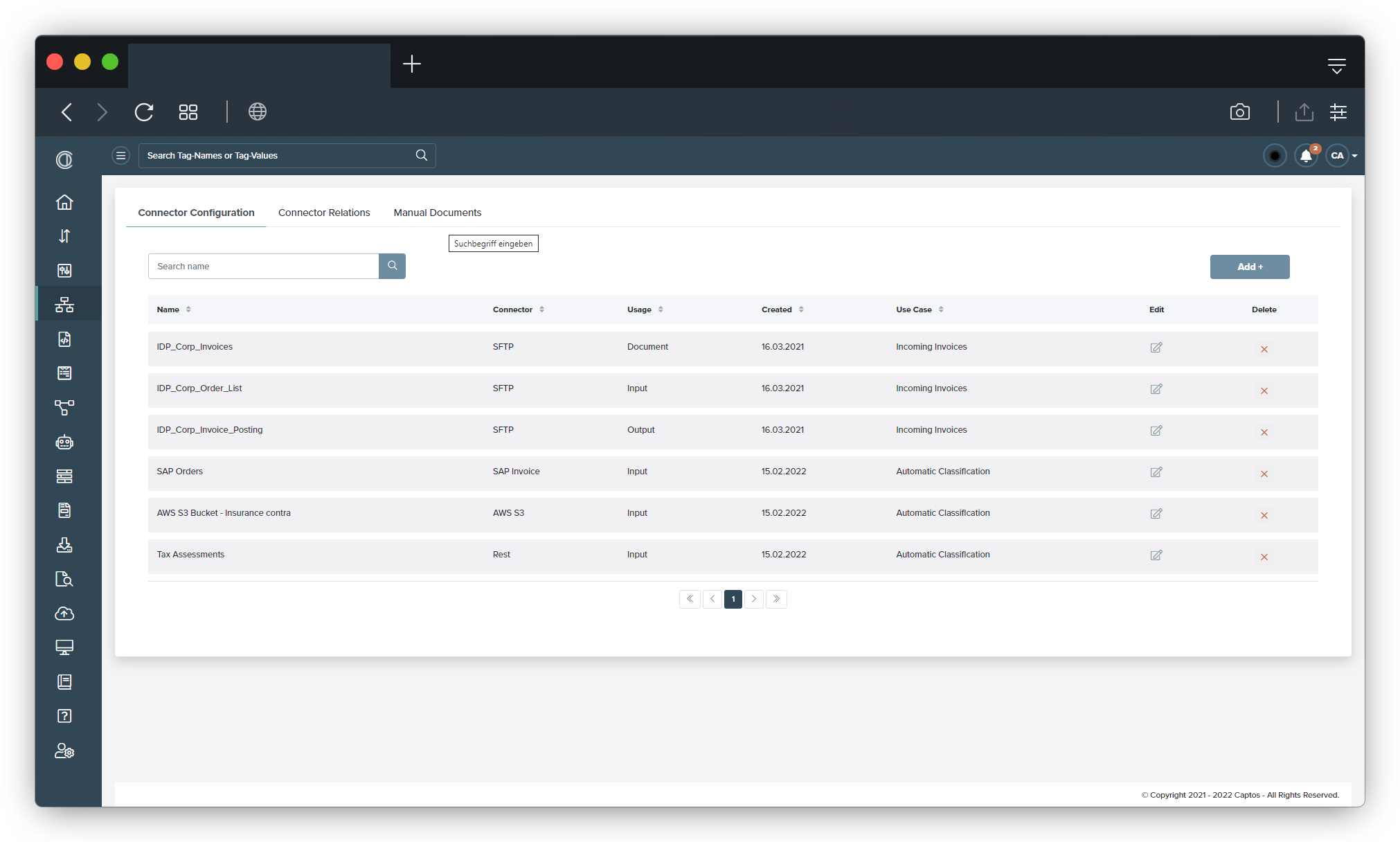
Data Labeling Engine
The integrated data labelling engine plays a key role in improving the accuracy of deployed AI models
- In CAPTOS, 'labels' refer to the categories of data into which extracted data sets are classified. Thus, labels, or 'classes', are the output on which the AI model is trained. The extraction of data by AI models also returns a label as output. In CAPTOS, labels can be created automatically or manually in the labeling area and are used as the basis for training use case models. CAPTOS provides integrated labeling during the validation and release steps.
